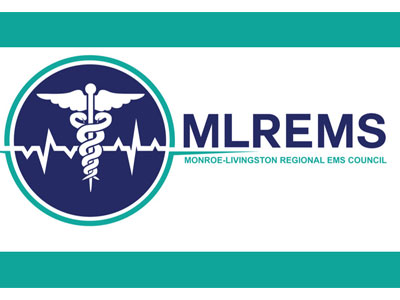 |
Building Upward—Primary Assessment |
1.00 |
Course Description: It is often said that experience is the best teacher. Dr. Jack Davidoff is an experienced EMS Medical Director. Paramedic Jason Haag is an experienced fire and EMS provider. The two of them share a few thoughts that prove to be an excellent review of what should and could be done during a standard primary assessment and more. Final Exam: A score of 80% or higher is required to obtain your certificate. You have two attempts to pass this multiple-choice exam. Please take your time to carefully answer each question. |
 |
Electrical Safety |
0.75 |
This course covers OSHA’s role and standards regarding electrical safety/hazards, defines the basic fundamentals of electricity, identifies and recognizes safety hazards, and describes protection methods against electrical hazards.
|
 |
Project Management - Advanced: Implementing Plans and Controlling Change |
0.75 |
This course will cover how to use a project management information system, implement a work authorization system, and conduct mid-project evaluation. You will also learn how to identify the information and supplies needed to control project change, implement a change control system, and identify control maintenance methods. |
 |
Budgeting: Reviewing Budgets |
1.00 |
A typical budget contains information for a single year and is updated and revised periodically. Each company creates a budget that fits its unique needs. A budget can be used for many purposes, but its primary functions should be to support strategic goals and to help identify when actual results deviate from what was predicted. |
 |
Creativity and Innovation: Promoting Team Creativity (Instructor Guide) |
1.34 |
The purpose of a team is to bring together people with diverse personalities, knowledge, education, and experience. This combined diversity encourages creativity and productivity to accomplish a common goal. Teams might consist of people from a single department or several departments.
Teams can generate new ideas, expand on or improve current ideas, make decisions, and solve problems. Teams can also be assigned to a specific task or be made responsible for a broader area, such as responding to changing customer expectations. When team members recognize their roles in a team, and the manager performs his responsibilities, creativity has a better chance of flourishing.
In this course you will learn to: identify characteristics of creative teams, and manage these teams effectively, conduct creative team sessions, and conduct brainstorming sessions, and use creativity to solve problems.
This Instructor's Edition of this course includes notes and suggestions to assist you in presenting the material, whether in an in-person classroom setting, or as an instructor-led online or distance-learning course. It also provides you with the answers to questions found in mid-lesson activities, as well as in the quiz that concludes the course. |
 |
School-Age Care as a Family Service: Emphasis on Planning Opportunities for Family Involvement |
2.00 |
The foundation for getting parents involved in school-age programs is to keep parents well informed about what is happening in the program. Quality programs also provide parents with opportunities to make suggestions and give feedback on program services through suggestion boxes, feedback forms, and surveys. When parents are encouraged to have input in the program, they develop trust and confidence in the program, and feel a sense of pride and ownership. They are more likely to participate as resourceful partners with program staff when they know their ideas are welcome and valued. Finally, because parents are all different from each other, it's important to provide many different opportunities for them to connect with the program. Staff in quality school-age programs recognize that all parents don't have to be involved in the same way. |
 |
Building Relationships with School Personnel |
2.00 |
School-age programs and schools share a mutual goal of supporting the growth, development, and learning of school-age children. Over 50% of all school-age programs nation-wide are housed in school facilities. When school-age programs are housed in school facilities, it is essential for staff in school-age programs to establish and maintain a positive relationship with school personnel. This makes it possible for schools and programs to work together to support the needs of the whole child. Staff can develop successful partnerships with school personnel by cultivating an understanding of the needs, interests, and goals of school personnel and using effective strategies, tools, and systems to build a spirit of positive collaboration and communication. |
 |
Quality Management: Customer Orientation (Instructor Guide) |
0.75 |
Customer orientation is an organizational mindset in which meeting the needs of the customer becomes an organization’s focus. Customer orientation is an important aspect of quality management because it ensures customer satisfaction by integrating the customer’s needs into strategic planning, product development, and product delivery.
There are three components that comprise customer orientation: awareness of the market, communication of market intelligence to the entire organization, and initiatives to make use of the market intelligence.
This Instructor's Edition of this course includes notes and suggestions to assist you in presenting the material, whether in an in-person classroom setting or as an instructor-led online or distance-learning course. It also provides you with the answers to questions found in mid-lesson activities, as well as in the quiz that concludes the course. |
 |
Microsoft Excel 2019 Complete |
24.00 |
Excel 2019 Complete provides the concepts and skills to be productive with Microsoft Excel 2019, starting with fundamentals and working up to advanced tools and techniques. This course maps to the objectives of the Microsoft Office Specialist and Expert exams for Excel 2019. Objective coverage is marked throughout the course, and you can download an objective map from 30bird.com.
Students will benefit most from this course if they want to use Excel 2019 to perform real-world tasks, from common workplace tasks to complex operations with large amounts of data. If students intend to take a Microsoft Office Specialist or Expert exam for Excel, this course offers complete coverage of all the objectives for both exams.
The course assumes students know how to use a computer, and that they're familiar with Microsoft Windows. It does not assume that they've used a different version of Excel or another spreadsheet program before. |
 |
Mang Mountain Pit Viper |
1.00 |
In this module you will learn about an elusive, beautiful—and highly threatened—species from China. The Mang Mountain pitviper Protobothrops mangshanensis is just as important to the ecosystem as the giant panda—if a little less cuddly. |
 |
Project Management - Advanced: Project Integration and Plan Development |
0.50 |
This course will cover how to measure data during project integration and differentiate between project and product life cycles. You will also learn how to identify the importance of developing a project plan, the elements of a project plan, the key input required for project plan development, and methods used in project plan development. |
 |
The Purpose for Ethical Commitment (CDA 6) |
2.00 |
This course explores the NAEYC Code of Ethical Conduct, equipping you to uphold your responsibilities and moral obligations towards children, families, colleagues, and the wider community. Discover how this essential framework guides your interactions and decisions, fostering a foundation of trust, respect, and professionalism in your work. |
 |
Project Management - Basic: Time Management |
1.25 |
This course will teach you how to identify the components of time management, identify the purpose of activity definition and sequencing, and recognize different diagramming techniques. You will also learn how to identify the factors that affect activity duration, and identify techniques for estimating activity duration. |
 |
Developing Effective Outdoor Environments and Interest Areas: Assessing Space and Planning Activities |
1.00 |
School-age children need daily opportunities to exercise, relax, and participate in a wide range of outdoor activities. The hours children spend in after school programs are often the best hours of the day for getting fresh air and enjoying the outdoors while it's still daylight. School-age programs can provide safe, secure settings where children can enjoy the outdoors. In this course, we will explore how to assess space and plan activities in outdoor environment and interest areas. |
 |
Developing Effective Outdoor Environments and Interest Areas: Moving Indoor Interest Areas Outside |
1.00 |
School-age children need daily opportunities to exercise, relax, and participate in a wide range of outdoor activities. The hours children spend in after school programs are often the best hours of the day for getting fresh air and enjoying the outdoors while it's still daylight. School-age programs can provide safe, secure settings where children can enjoy the outdoors. In this course, we will explore strategies for moving indoor interest areas into outdoor environments. |
 |
Strategic Decision Making: Decision Options (Instructor Guide) |
1.17 |
Before you begin generating options for a business decision, you should take time to understand the decision you’re going to make. You can increase and improve your options by using available techniques and by avoiding pitfalls. When planning to make a decision, you might generate other options, and compare them without considering which approach you should use to make the decision. By failing to consider your approach, you might select one of the options without considering all the necessary information. This lack of information can prevent you from recognizing and considering some of the best options.
In this course you will learn to: identify the techniques for generating options and improving the quality of your options, and evaluate your options and identify the techniques for making a final decision.
This Instructor's Edition of this course includes notes and suggestions to assist you in presenting the material, whether in an in-person classroom setting or as an instructor-led online or distance-learning course. It also provides you with the answers to questions found in mid-lesson activities, as well as in the quiz that concludes the course. |
 |
Brick by Brick: Edibles and Legalization-Part 1 |
1.00 |
In the Fall of 2021, EMT Conner Griffin sat down with Monroe Livingston County's Medical Director, Jeremy Cushman, and Dr. Nicholas Nacca. Dr. Nacca brings a unique set of skills to the first lesson in this series. His experience as an Emergency Medicine Physician and a Toxicologist is evident. They discuss the medical aspects of potent edibles and how legalization offers new challenges to prehospital medicine. You will want to listen to this lesson and return for more as this topic evolves.
Final Exam: This multiple choice exam is designed to test your knowledge of the material you just reviewed. You have two attempts to gain a 70% or higher on this exam. Please take your time and answer each question carefully. |
 |
Whole Child Approach |
1.25 |
This course covers the Whole Child Approach. It is just one out of many education courses we offer. This course will help you develop new knowledge about the Whole Child Approach and why it is significant in education. It will teach the importance of character development, social and emotional learning (SEL), personalized learning approaches, interventions, and assessments. This course will also explain culturally responsive teaching and how parent and community engagement is crucial to students' success. |
 |
Coping with Food Allergies in Child Care Spaces (CDA 1) |
2.00 |
A food allergy is a reaction within the body's immune system. It can be anywhere from mild to severe, and in some cases, it may be life-threatening. We must understand the symptoms and triggers of food allergies, the ways to prevent accidental exposure to prohibited foods, how to care for a child experiencing symptoms. This course is designed to be part of a Child Development Associate (CDA) Credential™ curriculum. It covers CDA Subject Area 1: Planning a Safe, Healthy Environment to Invite Learning. This course can also be taken as a stand-alone learning event, or as part of a broader early childhood education curriculum. |
 |
Social, Emotional, and Behavioral Supports for Teachers |
1.00 |
This course explores how to support students emotionally, socially, and behaviorally. It is important to understand the value of building rapport with students to promote resilience. Additionally, this course will explore the components of student behavior, how to identify the function of behavior, and how to create a supportive environment for students. |
 |
Growth Mindset in the Classroom |
1.25 |
This course covers how to incorporate a growth mindset in the classroom. It includes a comparison between growth and fixed mindset, as well as ways to help students have a "can do" attitude in school. It will help you develop new knowledge about this concept and how you can support a growth mindset in the classroom. This is just one of the many K-12 education courses we offer. |
 |
Providing Homework Support: Types of Homework Support |
1.00 |
Research indicates there are many different ways to provide effective homework support in school-age programs. When planning a homework support program, it is important for school-age programs to develop a homework philosophy that is consistent with the program’s overall philosophy, and reflects current research on best practices for providing homework help. The homework philosophy should also reflect the needs of parents and children in the program, and strike a balance between homework needs and other experiences that help children grow and learn out-of-school. In this course, we will explore the various types of homework support. |
 |
Helping Children with ADD Succeed In School-Age Programs: Characteristics and Needs of Children |
1.00 |
Children with ADD regularly experience struggles and challenges at home, in school, and in the community. Without the help of knowledgeable, understanding, and supportive people, they often experience multiple failures and frustrations on a daily basis. In this course, we will explore characteristics and needs of children with ADD. |
 |
Strategic Decision Making: Preparing to Make Decisions (Instructor Guide) |
1.50 |
In this course you will learn to: identify the factors that influence the outcome of a decision, and follow the steps of the decision-making process, define your decisions appropriately by establishing objectives, identify the problems decision frames can present, and the actions you can take to understand decision frames, and identify the guidelines for avoiding the problem of overconfidence, and describe the techniques for managing uncertainty.
This Instructor's Edition of this course includes notes and suggestions to assist you in presenting the material, whether in an in-person classroom setting or as an instructor-led online or distance-learning course. It also provides you with the answers to questions found in mid-lesson activities, as well as in the quiz that concludes the course. |
 |
Constructing: FAST-ED Overview |
1.00 |
Professor of Emergency Medicine and Chief of the Division of Prehospital Medicine at the University of Rochester, Jeremy Cushman, brings his experienced team of prehospital providers together to discuss the benefits of Field Assessment Stroke Triage for Emergency Destination (FAST-ED). You will want to take notes and download your favorite smartphone app. This lesson is sure to spark an excellent discussion with your training officers and/or medical director(s).
Final Exam: This multiple choice exam is designed to test your knowledge of the material you just reviewed. You have two attempts to gain an 80% or higher on this exam. Please utilize the smartphone app of your choosing and take your time and answer each question carefully. |


























